Personas are like dictionaries of your customers — that include all details you need to take a look at. But, how can you find the right information about your customers?
Persona is a representation of your ideal customers, based on the real data and educated guesses of yours, about your customer demographics, behaviors, motivations, goals and any other information you find useful.

Let’s go through an example.
You have a customer named Brad, and Brad is a Brand Manager at a Fortune 500 company in FMCG industry. Your product and solutions are targeting Brad, and people like Brad in the same industry. So, you’ll create a persona named Brad (or you can call another name) and fill the information you know about Brad, and people like Brad.
Before jumping in, we suggest you read our article “Do We Need Buyer Personas in Marketing?” — for you to better understand the use cases of personas, and why you should build them.
Structure of a Persona
Personas allow you to understand much information about your typical customers. De facto information between industries can be found below.
- Job Information
Job Title, Job Description, Company Industry, Company Size, KPIs - Demographics
Age, Gender, Location, Education, Family, Personal Background, Skills - Behavior
Personal Traits, Shopping Preferences - Personal Preferences
Typical Day, Used Tools, Success Criteria, Channels - Your Brand
Unique Value Propositions, Solutions, Marketing Message
These are typical information that is included at every persona. But, according to your business and what information matters the most to you, you can remove some information, and add new ones. For example, I added Business Store Type (Own Store, Franchise, Distribution Channel), since it’s relevant to Twentify’s field insights solutions.
How to define the information on personas?
Don’t forget, you’ve already identified the problem, understood the industries you’ve targeting, and now, you need to find out objective information about our customers. Just remember, personas are not about finding the problem you’re solving, but finding the ways you need to take in order to reach out to your customers, and understanding their motivations and preferences.
There are many things you can do while creating your personas. You can talk with your customers, check analytics on social media or your website, run a social media research and find people relevant to your business, run customer interviews or do market research. For each step, I want to go into the detail and explain how you can do them.
🐥 Social Media Research
This is my favorite option, so I’ve moved it to the #1 on this list. Simply, you’re researching your customers on social media according to the information you know about them. So, let’s say one of your customer personas is Brand Managers in multinational FMCG companies. First, you’re searching for Brand Managers in LinkedIn.

Yes, now we have 595,172 people that we can research on. But, not all these people fit into our personas — because we’re targeting brand managers at Consumer Goods industry, and living in the United States. Therefore, we need to filter this data.

Yes, we still have 16,553 people that fit into our targeting options. Now, you need to dig into these profiles through LinkedIn and find out their information. You can see their background, city they live at, and companies they’ve worked before. In addition to that, LinkedIn shares groups people are subscribed to and much more information publicly.
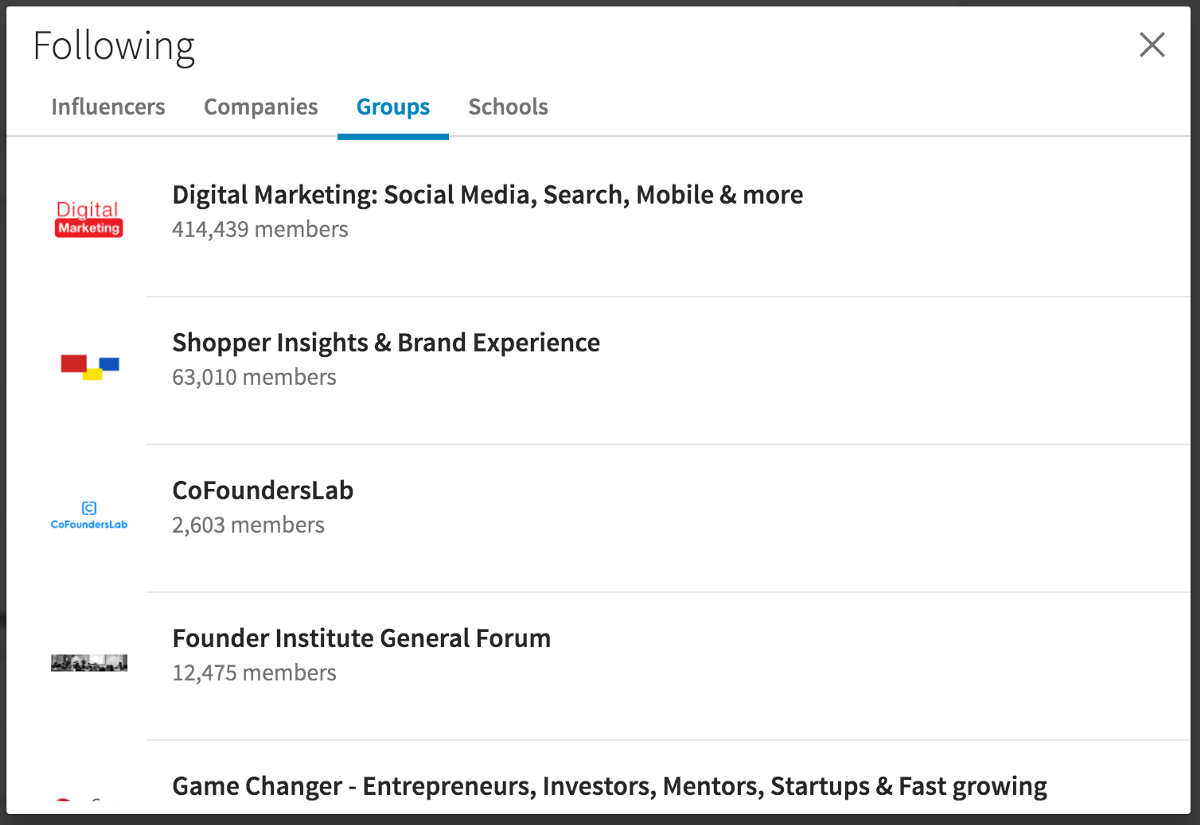
As many profiles as you go through, you’ll start seeing patterns between Brand Managers, and your persona will start designing itself within your mind. Now, it’ll be a little bit creepy — but to understand your customers deeper, you need to understand them personally, and check their other social media accounts, such as Twitter accounts to see their interests and communication preferences, in addition to what they share and talk about in the social media sphere. This will allow you to see behavioral patterns between Brand Managers — and will give you great insights about the content you need to generate to get their attention.
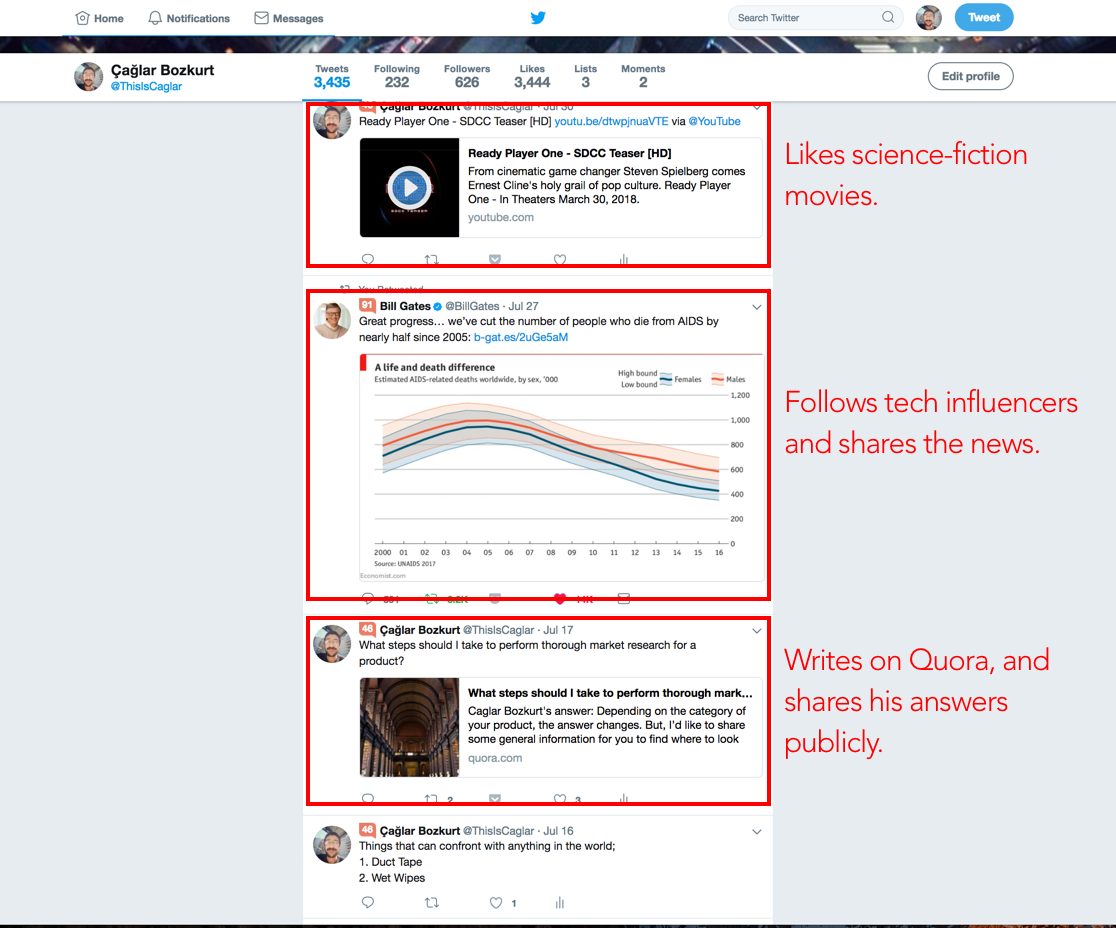
When you take a look at my Twitter account, you can easily generate outputs by taking a quick look. You can see my interests, preferred channels, followed influencers and more — and more profiles you review, more patterns you’ll find among people.
💬 Customer Interviews
One option here is, getting information from sales people and account managers. They’re interacting with your customers 7/24, so they know a lot of objective details about your customers. But, if you are running the sales or you want to break the biased information that you might get, you can consider visiting your customers to chat. At B2B enterprise sales, what I experience is really good. If you made a good impression on your customers, then they’re positive and open at your conversations, for you to improve yourself better.
So you’ve scheduled a meeting with your customer through Skype, or at the office. What kind of questions should you ask? Here are a few examples.
- How is the life for a Brand Manager?
- Can you describe how your typical day goes?
- How do you learn about new information for your job?
- Which service providers you’re working with in the marketing area?
- Are you happy with the service you’re having? Any troubles you’ve faced?
- Who’s purchasing from vendors? Do you have a credit card, or are you having invoices from the services and paying with bank transfer?
- If you had a magic stick that would fix three problems of yours, which problems would you solve right away?
It would be better for you to note the critical answers and observe your customers’ emotions very carefully so that you wouldn’t miss the point.
📈 Site Analytics
One of the most powerful tools you can use on persona data collection is, looking the demographics info at the analytics tool you use on your website. If you’re using Google Analytics, you probably know that it allows you to see the underlying demographics of the visitors.
Google Analytics share basic information like age, gender and geographical information of your visitors. But, at interests section, it gets interesting. You’re able to see a distribution of your visitors’ interests on this part — which is the best area they provide.
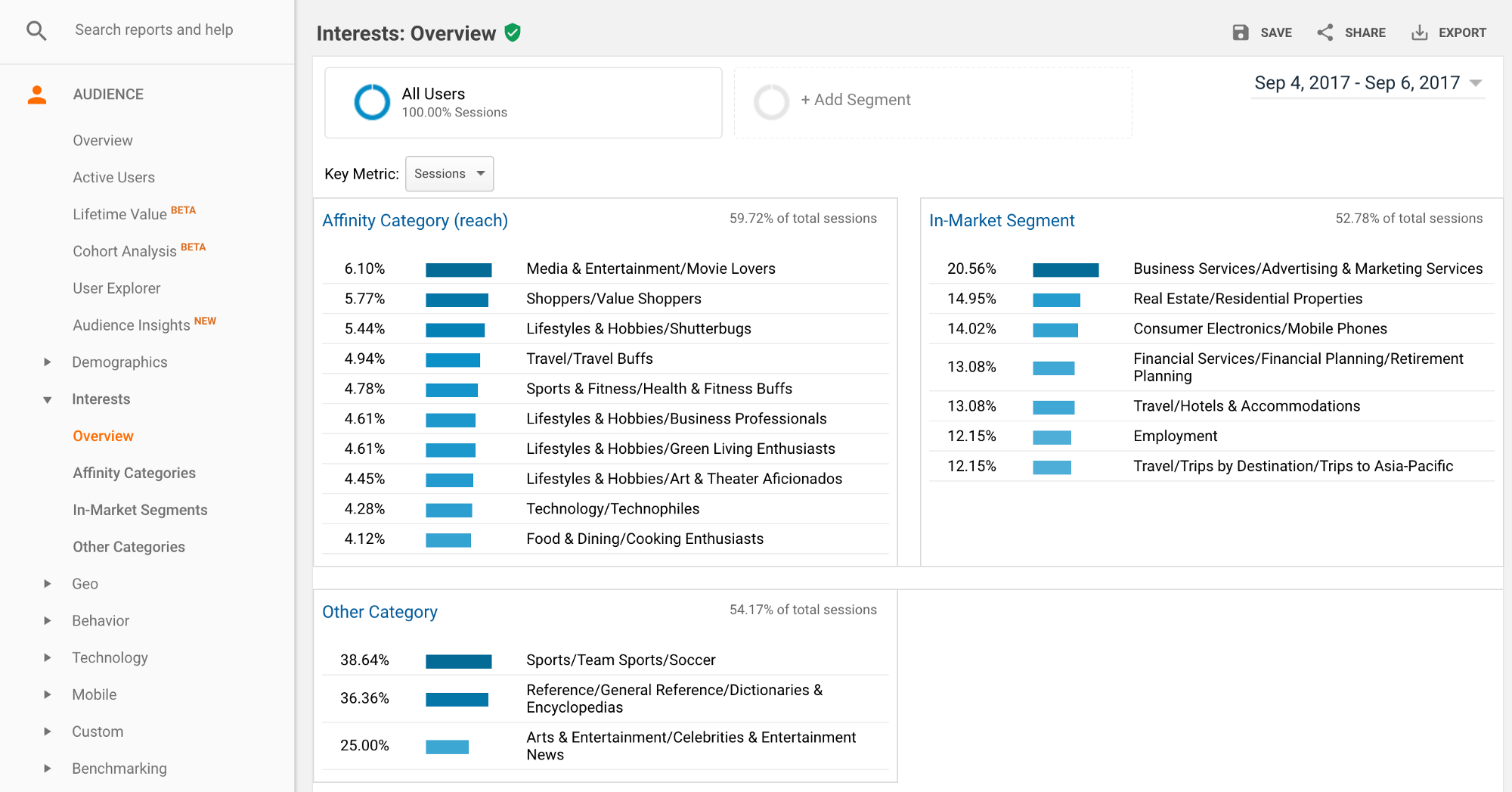
You can filter this information by date and source so that by checking the statistics at targeted pages, you can see the interests of your target audience. It also gives you a feeling about all your digital personas’ interests — so that you can target them easily.
This best works at blog posts. You can filter this data according to the visited page so that you can find out specific demographics for specific blog posts.
🎯 Social Media Analytics
We’re sharing our basic demographics and interests with social media platforms, I know it from myself. Facebook knows me better than most of my colleagues, so probably it knows your customers very well. But how can you know details of your customers?
Well, Facebook and Twitter gives free tools for you to understand the demographics, interests, and purchases. My favorite is Facebook Audience Insights. Facebook allows you to see and filter data of all Facebook users. You can go to Facebook Audience Insights, and start developing your queries.
You can find an example query that I did run to understand Marketers who have interests on Startups, and understood age intervals, gender information, interests, household income and much more.
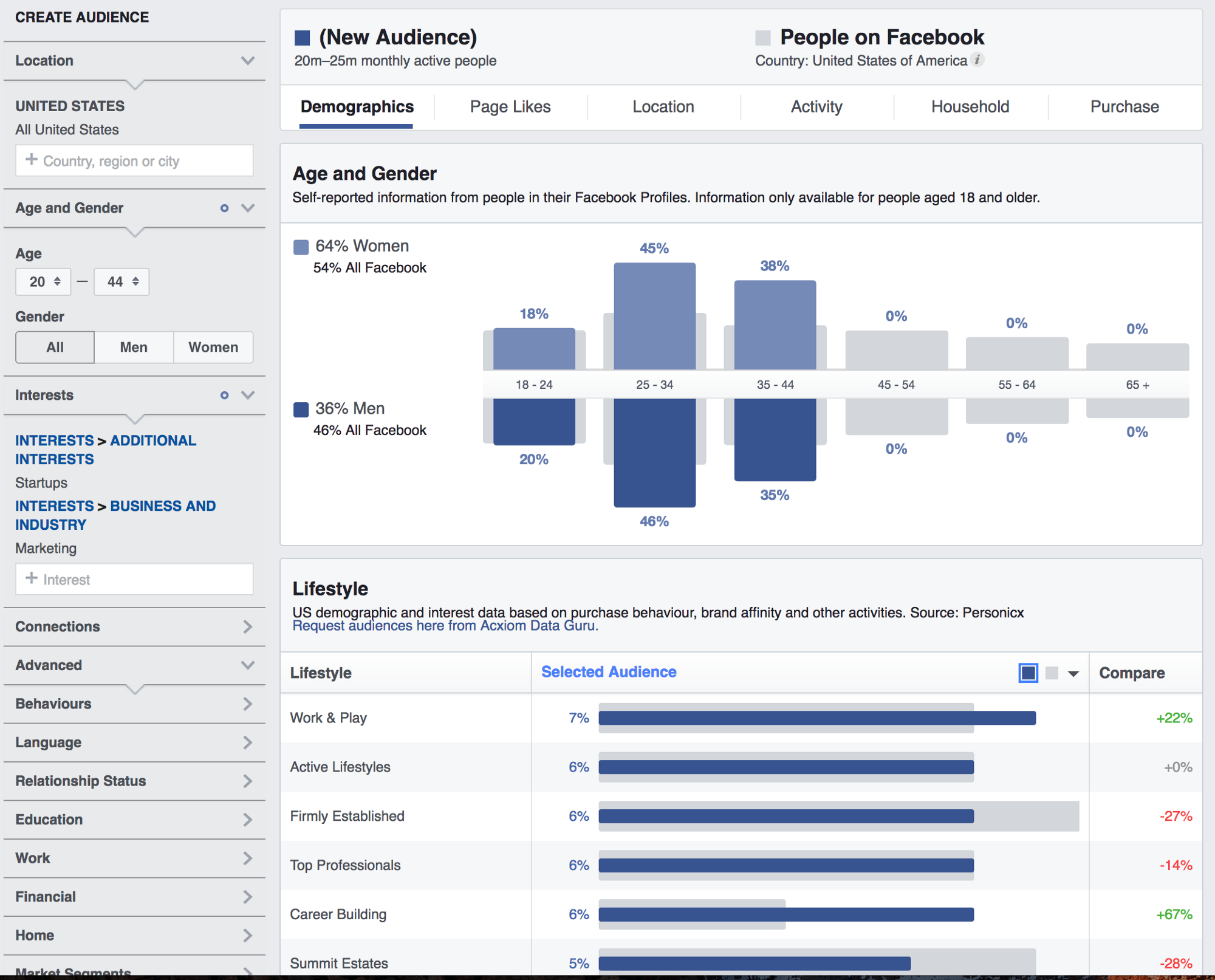
The best part is, you can go as granular as you want. You can filter data by targeting people who liked one of your pages, according to the work information, education information, household information, and behaviors. When you check it, you’ll go deeper and deeper at each request of yours.
Next one is Twitter Analytics. Not as open as Facebook, but Twitter allows you to see interests, age and gender information of your followers.
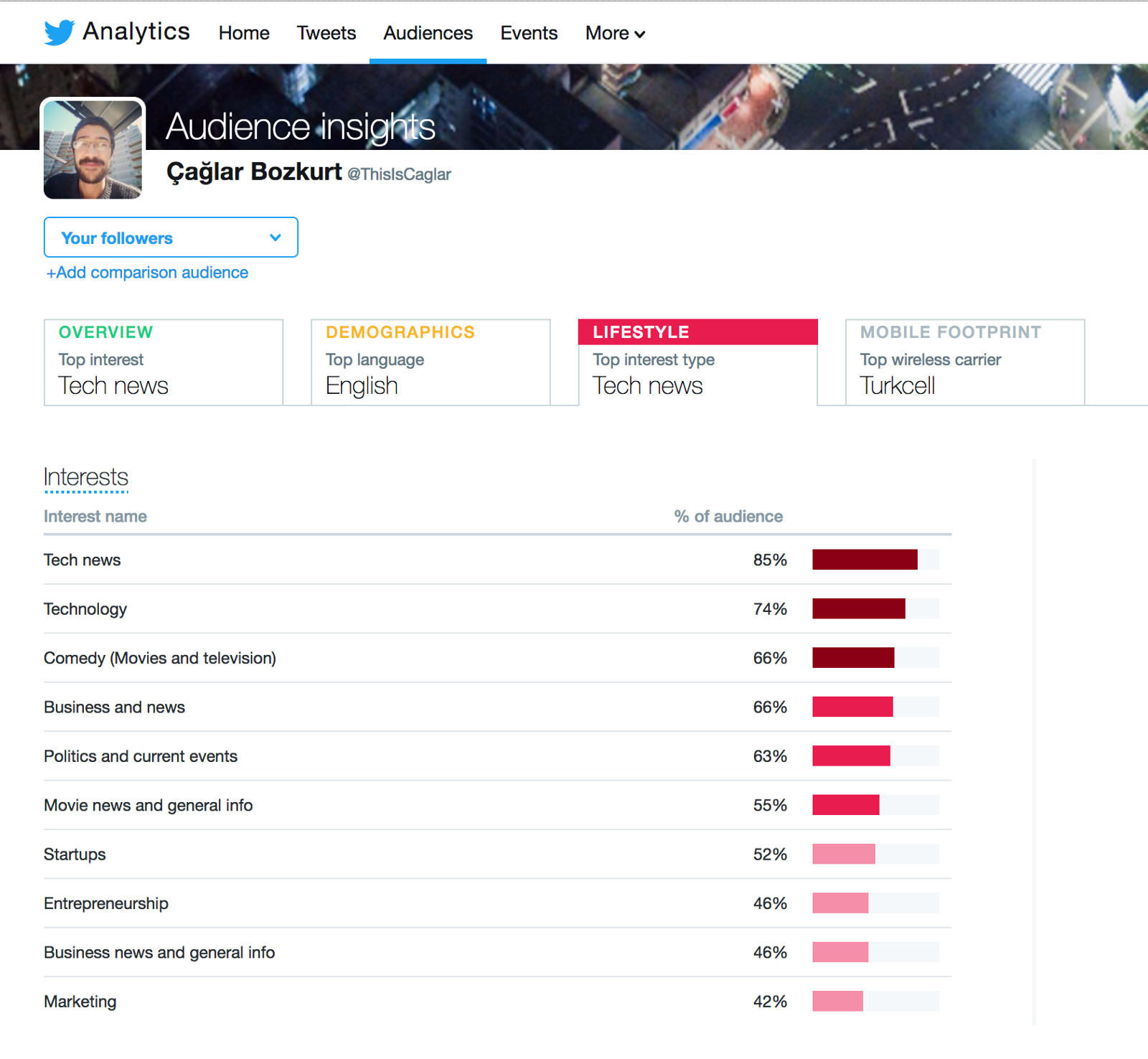
On Twitter, you’re able to see audience interests, age, gender, and preferences. For example, my followers like technology news, comedy, and business news. If I have an educated guess through my observations on my follower list, then this data will allow me to define Twitter interests of my personas, which will allow me to plan my content direction.
🔎 Market Research
This is probably the easiest option for persona development. You can either use SurveyMonkey, Typeform or any other survey hosting platform to create a survey and share the link with your customers to get their answers; or, you can play with a market research platform like Twentify to create your survey, apply your targeting and collect responses through the platform.
Things to think carefully is, if you’re sharing a survey link and don’t give an incentive to your customers (such as free trials, free ebooks, any giveaway), you might be stuck on data collection. Therefore, thinking about it and deciding on a giveaway would be an excellent accelerator for your data collection process. If you’re running on B2C area, I strongly suggest you use a market research platform like Twentify —it’s affordable, and most importantly, it’s easy and fast.
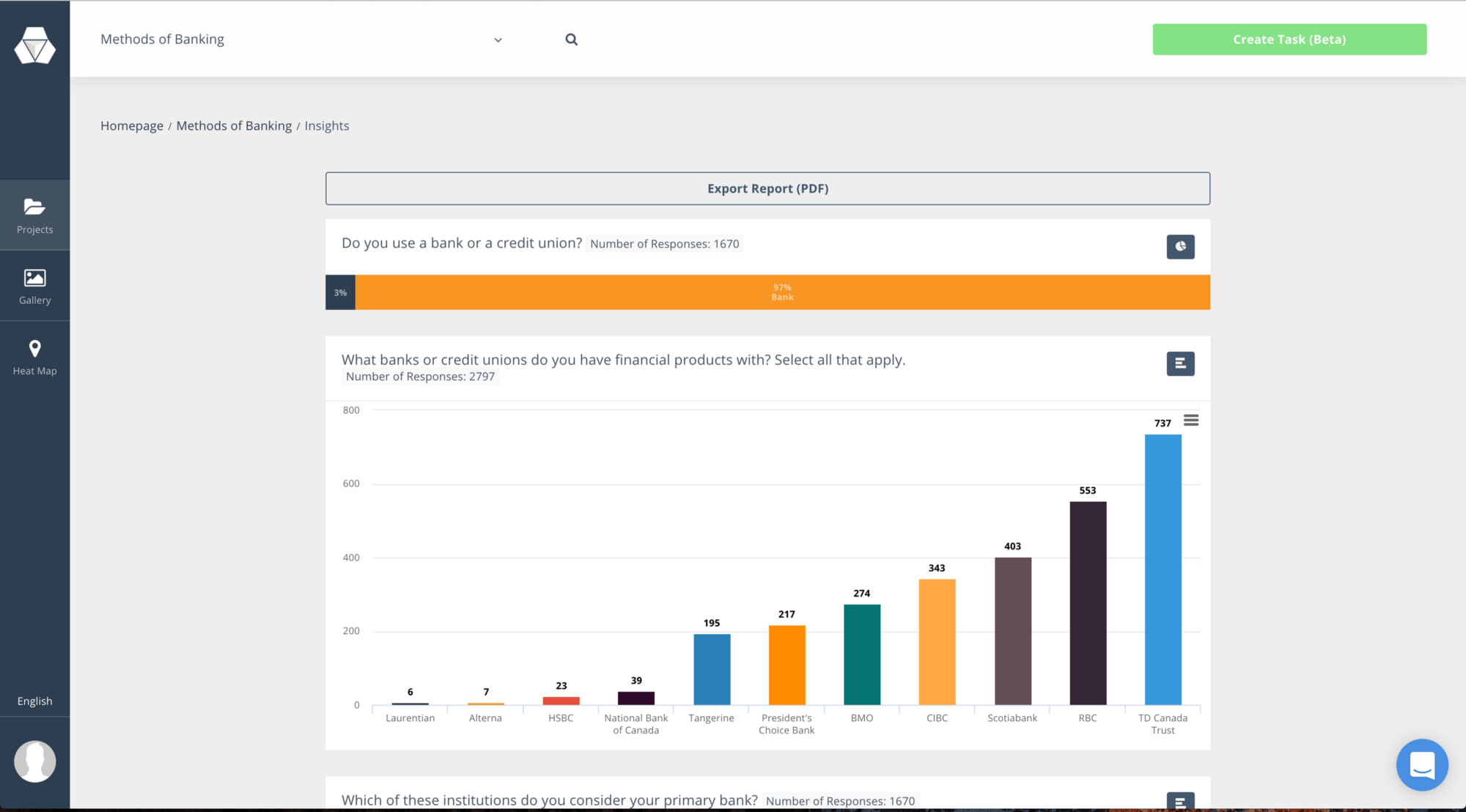
How to create a persona?
Now that you know all details, you can start collecting the data and start filling out your persona template. There are excellent template examples online that you can download and use, or you can fill online. I want to share persona templates HubSpot and Xtensio offering and another template that we offer — where you can download and start using right away.
-
Xtensio: User Persona Creator
Xtensio offers a free persona creator tool — which is a great one. You can sign up for free, select the persona template, start entering data and customizing right away! -
HubSpot Persona Template
HubSpot offers a free persona template that you can go through persona creation questions, and when you share your answers, it automatically fulfills the data within a .doc file and sends it to you as an e-mail. It’s not very fancy, but it’s a good way to fill a template with details.
Twentify Persona Template
We have a pretty basic, yet straightforward persona template that we’re using in Twentify. We’re using Google Drive a lot, so it’s a Google Drive document that you can make a copy of and start building your personas.
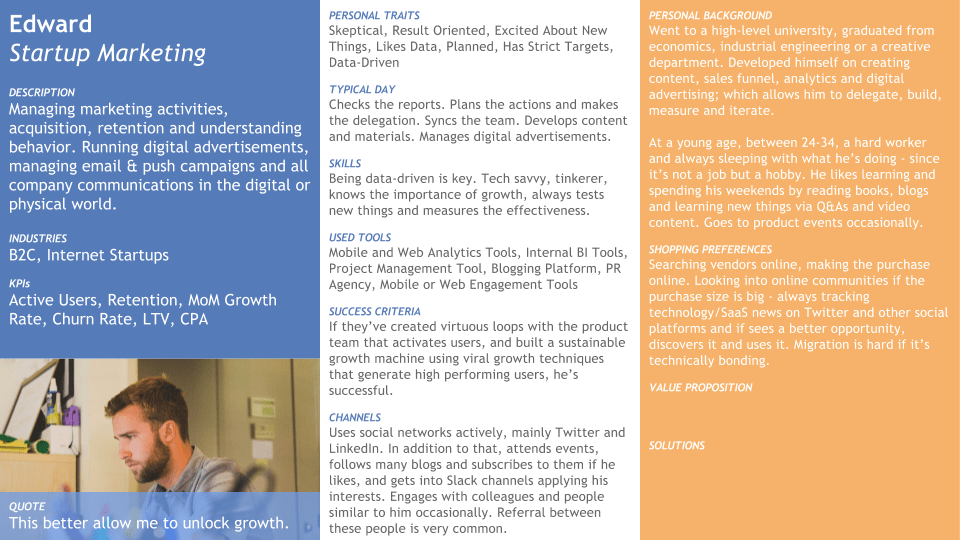
If you want to create yours, go to Twentify Persona Template here, and make a copy of it. Then, start fulfilling information with your persona details and then start using and updating it!
Want to collect data for your personas?
If you are looking to develop your personas on B2C area, then we’re offering Twentify self-served market research platform to you. It’s free to sign up and have a look around. It’s fast, easy and affordable to collect answers for your survey from your target audience and analyze the data you’ve collected.
Try our free membership here, and start collecting data from 350,000 consumers instantly.
Have a question?
If you have a question about creating personas, you can send a comment on this article, or drop us a line on Twitter through @TwentifyCorp or @ThisIsCaglar.

